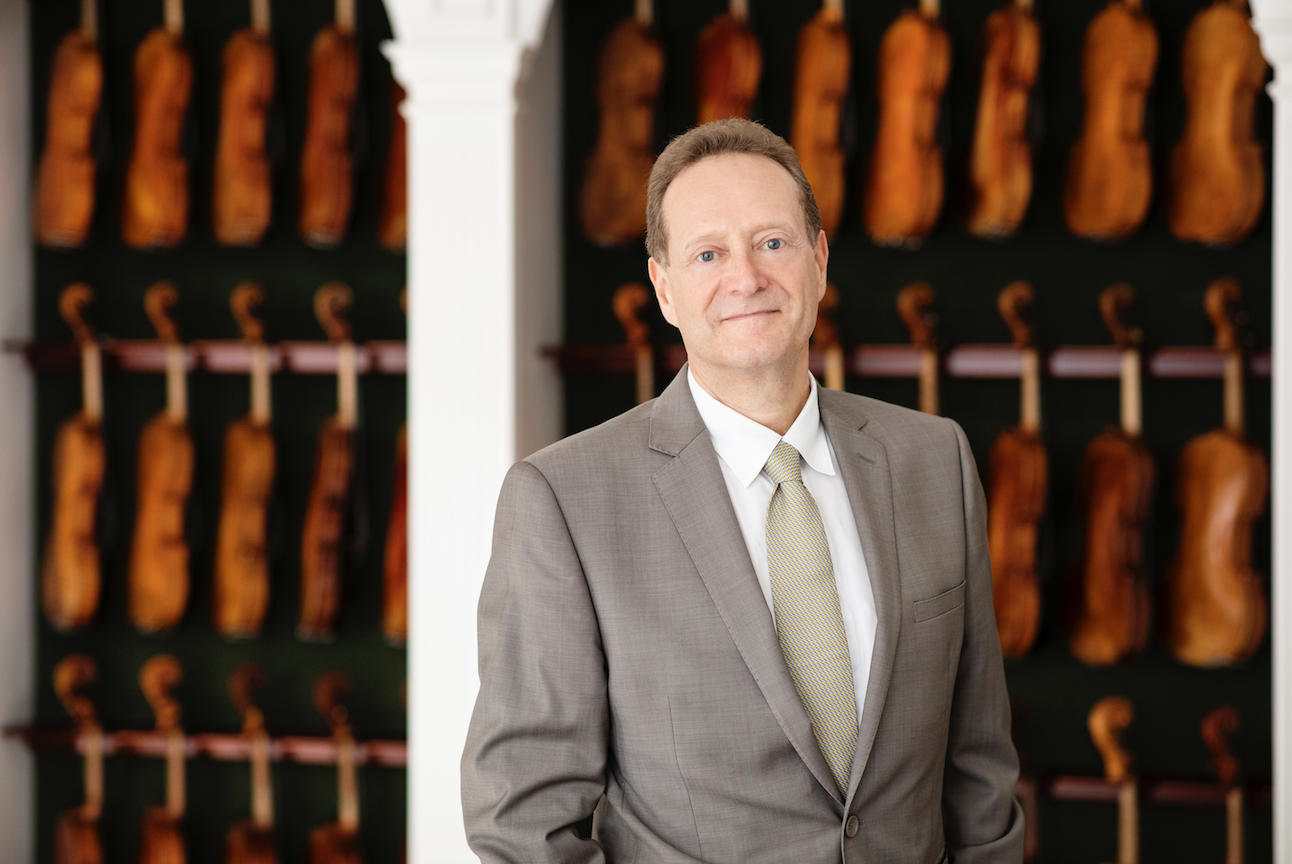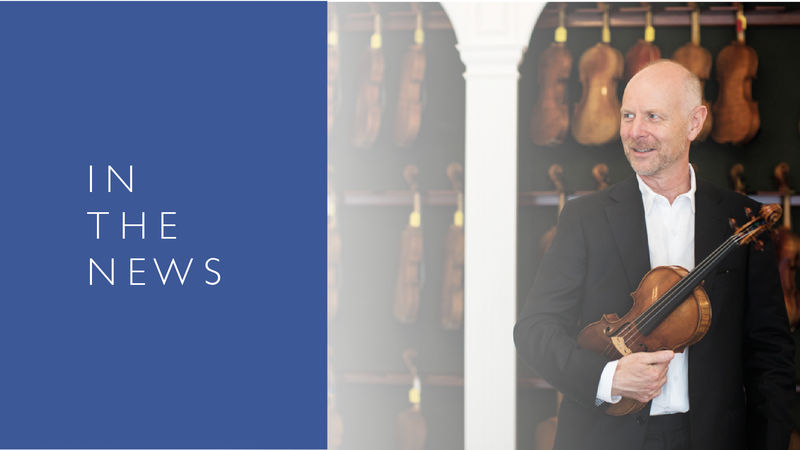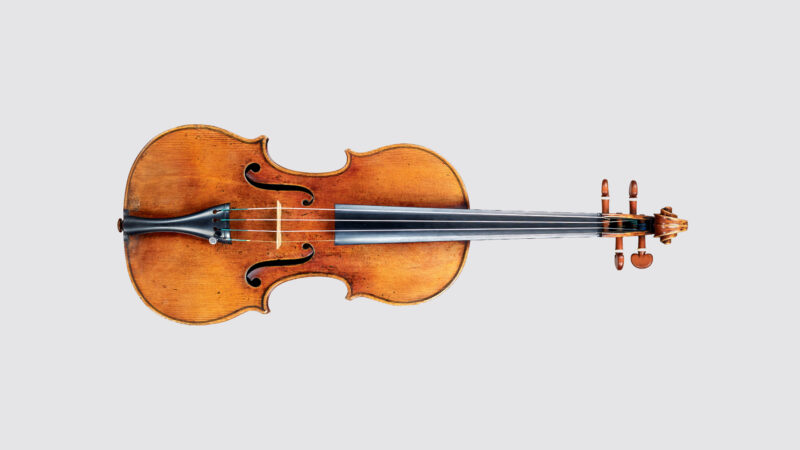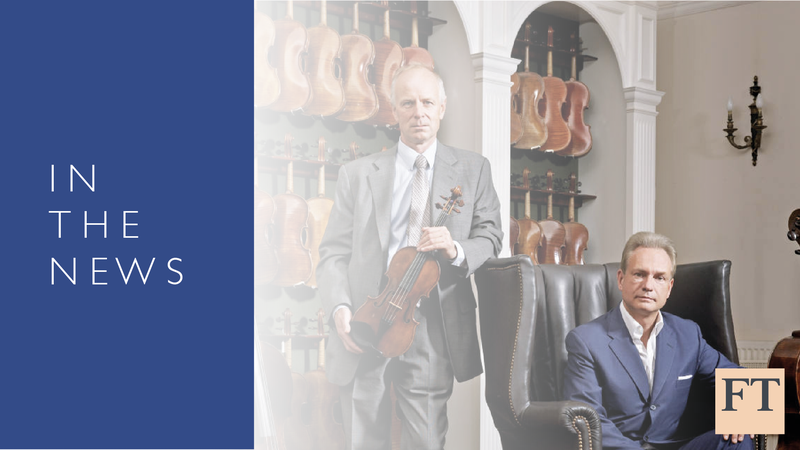BILLIONAIRE MAGAZINE
PLAY FOR TODAY
Steven Smith, the affable owner and director of John & Arthur Beare, London’s venerable dealer and repairer of violins, tells me that the firm never encourages speculative buying of instruments.
“Fortunately, I don’t think violins have generally been bought purely for speculative purposes, which is fantastic because the best hands for a great violin are those of a great player. Players generally find sponsors to support them by buying and then lending a violin. The sponsor gets a great investment at the same time and is not just a purely speculative buyer who is only investing,” he says.
However, that shouldn’t blind one to the fact that violins have been effective depositaries of investment value in the economic trials and tribulations of years (hopefully) gone by. Smith says: “We had some of the best business ever in the recent depression. We found that in 2008 there was panic and people didn’t know where to put their money. They came to us wanting to buy violins because they can be carried anywhere in the world and sold anywhere in the world in any currency, and in that sense, they are quite phenomenal investments.”
It’s obvious to see why Smith would wish to steer J & A Beare away from this purely speculative environment given that he grew up in a world saturated with violins. His father was a violin dealer while his mother was a player of the instrument. “I was born with violins literally all around me, in the shed, in the garage.” Smith even started making his own violin when he was 12 or 13 years old, although he never managed to complete it. Unsurprisingly, he then had a playing career although initial explorations in the world of violin dealing started to pull him towards his current role. He set up his own business, Morris & Smith, with Simon Morris, now co-director of J & A Beare. Charles Beare, approached Morris & Smith with a view to a merger and the ‘new’ J & A Beare, originally founded in 1892, emerged in 1998.
Thus far, we have talked about the violins mostly in the vernacular. J & A Beare doesn’t deal in ordinary violins but at the very highest end of the market and in instruments that have the very best provenance. Smith tells me 70-80 percent of its trade is in instruments from the pre-eminent Italian schools of the 17th and 18th centuries, including those from distinguished families such as, Stradivari, Guarneri, and Amati. What, I wonder, sets those instruments apart?
Smith says: “The climate in Italy, the wood, the incredible craftsmanship and the devotion of a whole life to the craft of violin-making – all of those things are what makes a violin great. When you look at a violin on eBay, for example, it is just wood, taken from anywhere. It’s put together quickly, roughly with just a cheap varnish. It hasn’t got all of that human input that makes something great, like a great painting. A violin is the same: it’s an expression of human achievement in that field. Every little detail matters and every maker has their own characteristic, like handwriting: the way they carve the scrolls; the way they do the edgework. That actually makes an individual instrument.”
Mimi Durand Kurihara, who is responsible for client relations at J & A Beare adds: “The history of the company, our collection of archives from experts of the past and the savoir-faire of our numerous restorers give us a very good vision of the most important historical instruments in the world. We probably have the largest inventory of historically important violins in any one location.”
There’s clearly a great deal of scholarship and experience that lies behind the identification of such instruments and J & A Beare is putting this to work in a series of small, high-quality, boutique auctions. However, even though Smith says that he can instantly tell a lot about a violin’s provenance by just looking at it, science is also proving to be a great asset. Dendrochronology, for example, helps date the wood.
Of course, J & A Beare also provides a repair service for the buyers and users of its violins. To that end, its craftspeople are recruited from a variety of violin-making schools: importantly before the firm’s more elderly craftspeople retire so they have a chance to pass on their many years of experience. But how desirable is this type of operation in the long term. Smith evinces some concern: “I do worry because there are many companies springing up that don’t have workshops, proper workshops, and to me that’s a worrying trend in the sense that people are buying instruments from a place where there’s no real back-up if things go wrong or if they want work doing.”
“We at times, receive instruments for valuations with some damaging recent restorations made to them,” says Mimi Durand Kurihara.
J & A Beare also had its ears finely attuned to what’s happening in the Far East, working with agents in Seoul. Smith first visited South Korea in around 1989-90 and was struck by the force of a market where so many families wanted their offspring to become musicians; such interest is also beginning to stir, perhaps unsurprisingly, in China. Smith notes some serious expressions of intent from Chinese buyers in the last year.
He says: “We’ve been fortunate in England and Europe in that we’ve had a lot of great instruments here. They are now spreading around the world much more than they used to and some people worry that they won’t come back to Europe but, in a way, I feel that every country that has talented musicians should have access to them and counties such as China deserve to have some of those instruments. There are almost no Stradivari violins there. One of two have just begun to sell and that’s the most exciting market from a business perspective that we’ve seen in the last 50 years.”
Mimi Durand Kurihara says: “Ultimately our business has grown out of the quality of our relationships with our returning clients, both musicians, and philanthropists. The emotional input becomes much greater than any financial investment. We all become part of a common history around an instrument. And that instrument has the power to touch millions across the world, and across centuries past and future.”
______________
Article by Lydon White
Photographs by: Piers Cunliffe
BILLIONAIRE MAGAZINE



